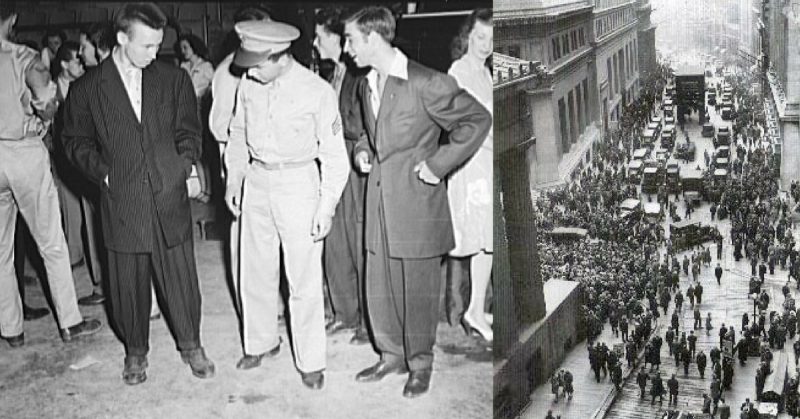In 1943, when the United States was involved in World War II the country was rocked on the home front. Thousands of Mexicans had migrated to the city of Los Angeles, California in order to bolster the defensive effort of the United States. However, what followed instead was pandemonium as young Mexican Americans were attacked constantly by the Marines and sailors of United States. The young Mexicans wore “Zoot Suits”, which were mainly a broad-shouldered drape jacket, with balloon-leg trousers, and flamboyant hats.
U.S. servicemen attacked every Mexican and Mexican-American youngster who would be seen wearing this attire, and they became known as the zoot-suiters. The riots were mainly caused by the hostilities and fears that gripped Americans after the murder trial of Sleepy Lagoon, where a young Latino man was killed in a barrio. This triggered several attacks in various cities of the United States.
How it All Started
The United States was heavily involved in World War II and needed workers in the service and agricultural sectors. This saw an influx of Mexicans enter the country to fill up positions in the sectors, which had been vacated by everyone who had joined the U.S. military.
Mexico reached an agreement with the US and sent temporary workers, who weren’t welcomed with open arms by many white Americans. Clothing restrictions had been placed during wartime and the zoot-suits that the Mexican American youth wore was seen as unpatriotic by the vast majority of servicemen in the Army.
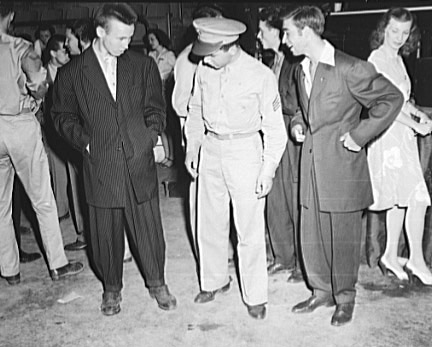
What exacerbated the problem was that most of the white Americans and servicemen had little to no knowledge of Mexican-American culture. The tension between Mexican Americans and white Americans had been around for a long time, as Mexicans were generally classed as migrant workers and were discriminated against when it came to jobs in the country. The United States had deported more than 12,000 people of Mexican descent back to Mexico during the Great Depression in the 1930’s.
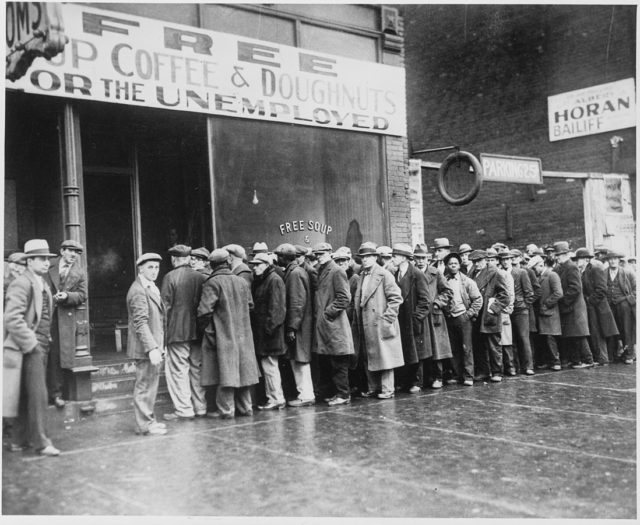
Lighting the Fuse: The Sleepy Lagoon Murder
The Sleepy Lagoon Murder Case dominated all the national news in 1942. Some Mexican-American teenagers who were from the 38th Street Gang were alleged to have murdered Jose Diaz. The teenagers had a trial and were convicted of murder with all of them getting lengthy prison sentences. However, the convictions of the nine young men were overturned, and this created further animosity between the white American community and Mexican Americans. The police and the media presented all Mexican American youth as gangsters, thugs, and hoodlums, which didn’t help matters at all.
The fuse had been lit, and it was slowly burning towards the impending explosion. Tensions were reaching fever pitch levels between Mexican American youth in the country. The United States had placed strict restrictions of rationing, particularly on the manufacture of wool.
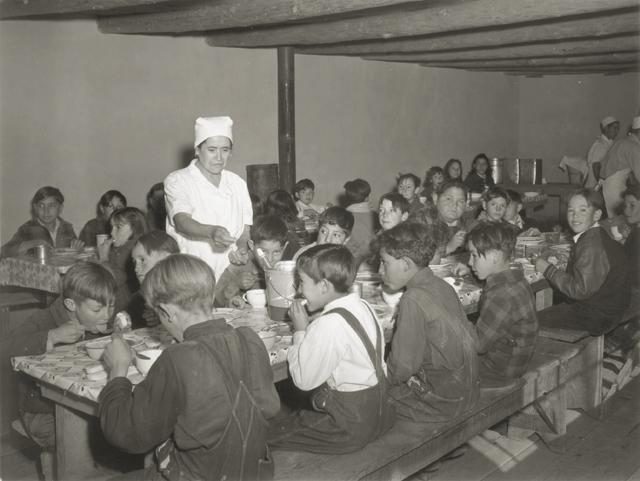
The army needed to manufacture clothing for its men, and placed a 26% cutback on wool in all fabrics. However, the Mexican youth were seen wearing Zoot-Suits, which were made by bootleg tailors. The zoot-suiters paraded around Los Angeles and were instantly recognizable by their clothes. This didn’t please the white military servicemen in the U.S. Army who believed that the Mexican youth was deliberately not following the rationing regulations.
Leading up to Absolute Mayhem
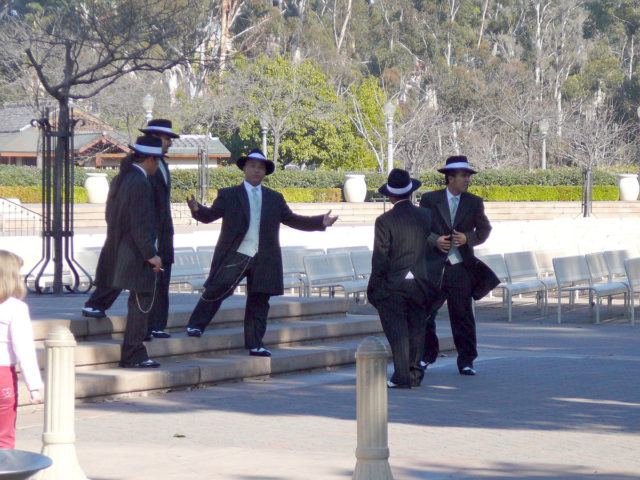
Shortly before the rioting began and all hell broke loose, there was the small matter of the Sleepy Lagoon Case, which was a total game changer when it came to the altercation between the Mexican-Americans, who dressed up in Zoot suits. Due to the media sensationalizing the Mexican youth, there was mass hysteria and paranoia amongst the white Americans who frequently got into fights with Latinos in all the major cities across the United States.
The Marines and sailors also played their part, as they viciously confronted, attacked and beat up numerous zoot-suiters whenever they encountered them. There were cases of violent conflicts, and even the police departments in those cities couldn’t do anything to stop them.
On June 4th, 1943, around 200 U.S. Navy servicemen got into taxicabs and headed to the center of the Mexican settlement. The sailors confronted the zoot suiters and actually assaulted them with clubs, then stripped them off their clothes and burned them in a pile. They didn’t stop and stripped and attacked anyone they saw in a zoot-suit. This kick-started the zoot-suit riots and all hell broke loose in Los Angeles.
The Rioting Begins
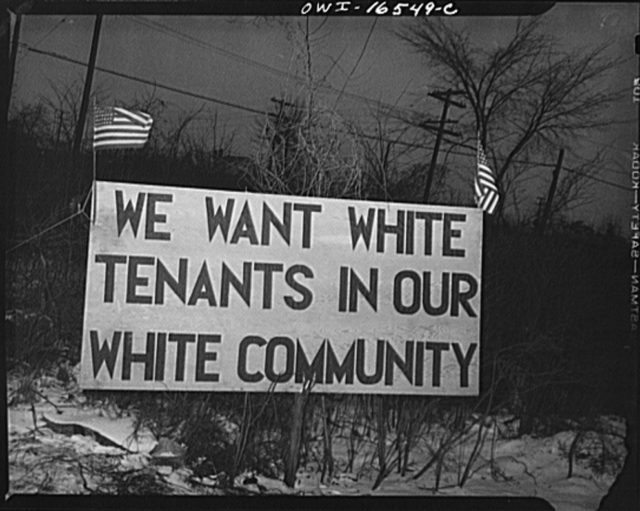
The ensuing violence was some of the worst that has been seen in the United States in history, and the riots lasted for several days. There were thousands of servicemen marching down the streets, entering movie theatres and bars, and openly assaulting every young Latino or Mexican male. Police accompanied the servicemen but were ordered not to arrest any of them, and after several days of this madness, around 150 people were injured and the police had arrested nearly 500 Latinos on charges related to vagrancy and rioting.
The local press hailed the attacks by the servicemen, and described them as an act of cleansing, where Los Angeles was being cleared of hoodlums, thugs and miscreants. The City Council of Los Angeles banned the wearing of Zoot-suits within the city, and the dress was turned into a badge of thuggery and hoodlumism. All sense of law and order in Los Angeles was lost as servicemen started viciously attacking everyone they met in zoot-suits, even African Americans were targeted.
The situation got so bad that the Marine and Navy Corps had to intervene in order to stop the attacks, and actually declared Los Angeles to be off limits for military personnel. They declared that the sailors and servicemen had acted in self-defense, but it did little to curb the race-riots that had started springing up all across America.
The Nation Reacts
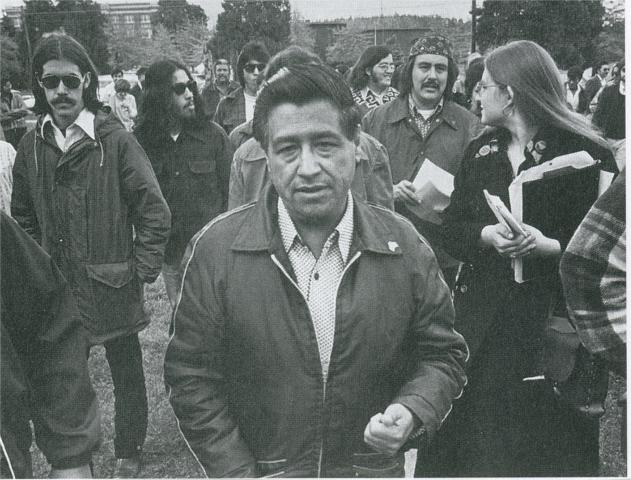
Once the zoot-suit riots had been stopped, the entire nation publicly condemned the attacks by the military officials. The relations with Mexico had also seriously deteriorated at a time when the United States was embroiled in war and needed help in different industrial sectors. Many declared that the riots were caused due to racism and blamed the media for aggravating the situation by labeling zoot-suits as the badges of thuggery and hoodlumism.
The zoot-suit riots inspired many activists after the war, including the likes of Richard Wright, Ralph Ellison, and Luis Valdez. Malcolm X and Cesar Chavez were involved in the zoot suit riots and were also arrested several times during the disturbances.
